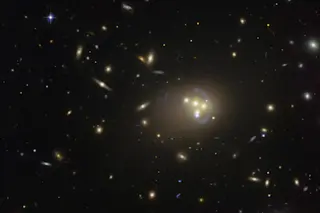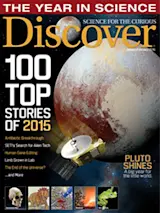Astronomers have long thought dark matter — the famously invisible mystery substance that glues together galaxies and galaxy clusters — interacts with any material only by its gravitational pull. But last April, scientists announced the first evidence that dark matter may also use friction to push against itself.
One of the tricks astronomers use to study dark matter — which, being invisible, can only be studied indirectly — is gravitational lensing. Anything with mass warps the nearby space, so as light passes near that massive object, its path bends, following the warps. Sometimes that can result in a faraway object appearing distorted or even multiple times around a nearer massive object, like a menu viewed through the bottom of a wine glass.
An object's gravity can distort the light traveling nearby. | NASA, ESA and L. Calçada
Using the Hubble Space Telescope, astrophysicist Richard Massey at England’s Durham University and ...















